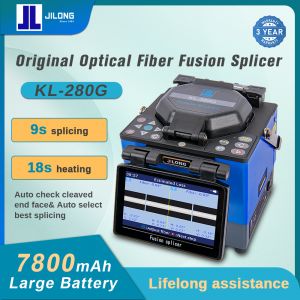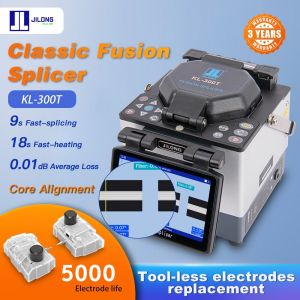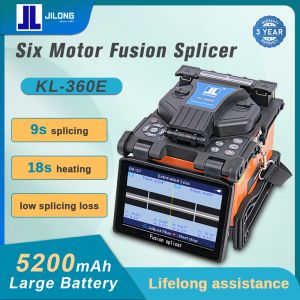Fusion Splicing is a method of connecting two pieces of optical fiber. The ends of two pieces of fiber are mated in a precise way so that light can travel through the fiber. This method of splicing welds and permanently connects two optical fibers together. This splice in many instances produces nearly zero reflection and provides consistent results when done by a trained installer. There are three instances when you perform a fusion splice to a fiber optic cable. This is done when optical fibers have been damaged, to extend the length and finally to connectorize the optical cable.
Items Needed for Splicing
• Fiber Stripper
• Fusion Splicer
• Alcohol Wipes
• Fiber Splice Connector
• Fiber Cleaver
• OTDR
How Does Fusion Splicing Work?
A fusion splicer is a pretty straight forward piece of equipment. It creates an electric arc which produces a weld that permanently bonds the optical fiber. First, the fibers must be properly prepared and the ends of each fiber loaded into the holder of the fusion splicer. From here the machine does the rest of the work. From here the machine does the rest of the work. Once loaded, the splicer cameras align the fiber by using motors. Once this process is completed, the optical fiber is permanently fused using an electrical arc which is produced by the splicer.
Steps Needed to Complete a Fusion Splicing
There are four important steps to completing a successful fusion splice.
1. First you must strip the fiber. To prepare the fiber for fusion splicing, the protective polymer coating around the optical fiber must be removed.
2. Next you need to clean and cleave the fiber. This is best done using a precision fiber cleaver. Prior to cleaving the fiber you must be sure to clean the stripped fiber with isopropyl alcohol or a similar fiber optic cleaning solution.
3. You are now ready to join the fiber together with the fusion splicer. Once the end faces of the fiber are aligned the splicer uses an electric arc to produce the fusion of the two fibers and permanently join them.
4. The final step is to protect the fusion splice. These sleeves are specially designed protector sleeves which provide support to the splice area.
Here’s where an OTDR comes in handy. The OTDR will calculate the optical power loss at the connection.
Choosing the right fusion splicing equipment
You need to choose the correct equipment for the job at hand. Without it your job is only half done. The correct equipment always makes your job faster and easier. As we know now a fusion splicer creates one piece of fiber by fusing two separate pieces of fiber together. This is a tool no installer should be without. Currently, there are three types of fusion Splicers on the market: CORE ALIGNMENT SPLICERS (three-axis alignment), ACTIVE V-GROOVE SPLICERS (movable V-groove) and CLADDING ALIGNMENT SPLICERS (fixed-groove, single-axis alignment). A quality fusion splicer will align and fuse fibers so precisely that the splice will not significantly impede data throughput along the optic link. A good fusion splicer will provide you with important splicer information.





